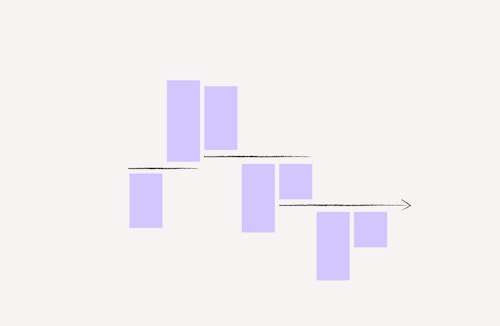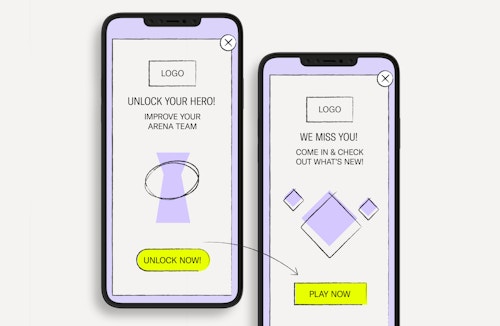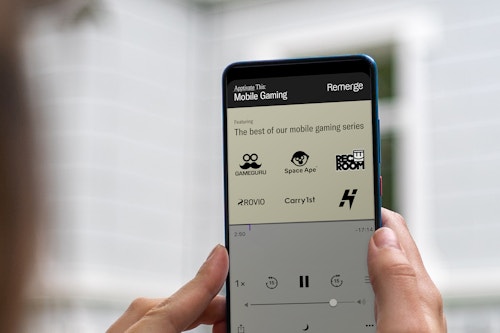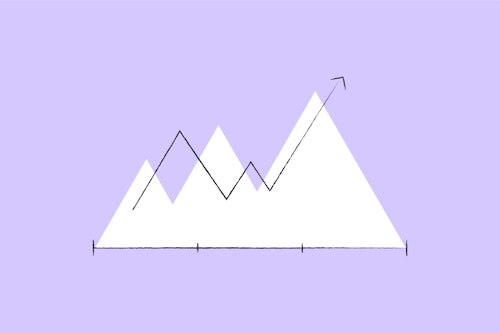How shorter inactivity windows drive higher ROAS for gaming apps
September 01, 2024

The benefits of targeting a recently installed user with the right message can pay dividends in the long run - so why do so many gaming apps continue to hold back until the magic “day 7”? What can they do to effectively communicate with their users before the first week is over?
We look at why 86% of Remerge gaming clients set inactivity windows for retargeting campaigns at less than 7 days, and how this significantly boosts their ROAS.
How major gaming apps plan their marketing spend
At Remerge, we’re seeing that the most sophisticated mobile gaming companies are realizing the true value of retargeting their lapsed users. As a result, they are adding more budget and segmentation layers to their marketing plans.
Successful gaming apps have carved out a competitive edge by understanding the nuances of running user acquisition (UA) and re-engagement campaigns. These practices complement each other by communicating with users at different stages of the marketing funnel, and many businesses have developed strategies to split user groups and target customers with personalized ads that deliver results. But in spite of this, we continue to see a gap in their retargeting approach.
Pitfalls of the day 7 retargeting trend
Waiting 7 days before retargeting a new user is a carryover from UA campaigns, as marketers believe these users will organically convert during the first week after the install. While this may have been true in the early days of mobile advertising, the overall depth and possibilities of the app market have grown.
The overwhelming level of competition means that waiting 7 days to re-engage a new user can be costly – that’s enough time for audiences to get distracted, find new interests, or explore other apps. AppsFlyer data shows that only about 21% of players return the day after install.
It’s becoming even more expensive to obtain users, so once marketers spend money on acquiring new audiences, it’s important that they retain them. Between April 2023 and March 2024, for instance, the average global cost per install (CPI) for casual gaming apps doubled, increasing from $0.98 (in 2022–23) to $2.17 per install.
There’s also that assumption that retargeting campaigns before day 7 are pointless, as fresh installers are highly unlikely to convert before then. This is not the case based on our experiences working with gaming clients at Remerge. For apps with the highest Average Revenue Per User (ARPU) figures, we’ve seen that it typically takes an average of 7 days to convert a user, with a considerable chunk of users converting on days 3-4.
Focus on early retention strategies
We see a significant drop in user retention between days 3-4 for certain sub-categories, such as role-playing games, with some of these apps losing almost half of their newly acquired users by day 4. This is a considerable chunk of once interested players who could now be enjoying and spending money in a competitor’s game. Marketers must remind a user why they downloaded an app in the first place. From there, they can target the user with messaging that will retain the conversion and push them further down the funnel towards becoming a loyal and paying customer.
Our gaming clients have seen some of their best results when implementing early retention strategies that aim to convert users from as early as 1-2 days lapsed. These campaigns focus on areas like running creatives and messaging for special features, offering bonus rewards, and promoting login streaks. Building a connection with your user base from the moment of install will help establish future engagement and in-app revenue.
Reach more gamers with reduced activity windows
Working with lengthy inactivity windows means marketers may be missing out on the option to retarget more users with high intent and spending potential. With major drop-off rates often coming at days 3-4, marketers who put off retargeting until day 7 could find themselves with a reduced segment size of active, valuable players.
At Remerge, 86% of our gaming clients set inactivity windows to less than 7 days, with around 10% setting their inactivity window at 0 days. It’s worth reducing inactivity windows and investing heavily in micro-segments, such as paying users before day 7. We encourage our clients to win those users and retain them before their heads are turned by another game. The chances are, similar apps know the value of this audience and will bid aggressively to take advantage of competitors that did not retarget them sooner.
To avoid UA cannibalization or touching organic users, we have also worked with gaming apps to exclude users who have installed the app within the last 7 days, but retarget those who have shown activity before day 7. We’ve found that excluding recent installers does not significantly decrease audience sizes and still allows marketers to target users they know are playing the game.

Segment by early and recent installers
As well as looking at inactivity windows, marketers should consider creating segments of early installers covering day 0 and days 1-3. For this audience, tactics such as a daily rewards login will help gaming apps build stronger, long-term reactivation strategies and engage users.
We would also recommend a segment of recent installers for days 3-7. Time-sensitive promotions work particularly well for these users, and by offering a mid-tier reward, marketers are more likely to convert users into paying customers.
Good things don’t always come to those who wait
Every gaming app is different and finding exactly the right drop off point will vary. But with thousands of games available every month, early engagement is crucial to fending off competition and building loyalty – by day 7, this opportunity may already be gone.
Join our newsletter





